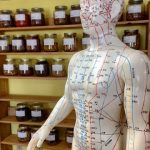Arthritis is a common condition that affects millions of people worldwide. It is a chronic disease that causes inflammation and pain in the joints, which can lead to reduced mobility and quality of life. According to the Arthritis Foundation, over 54 million adults in the United States have been diagnosed with arthritis, making it one of the leading causes of disability in the country. It is important to recognize the signs and symptoms of arthritis early on to prevent further damage and improve outcomes.
What is Arthritis?
 Arthritis is a term used to describe a group of conditions that cause inflammation in the joints. There are over 100 different types of arthritis, but the most common types are osteoarthritis, rheumatoid arthritis, and psoriatic arthritis. Osteoarthritis is caused by wear and tear on the joints over time, while rheumatoid arthritis is an autoimmune disorder that attacks the joints. Psoriatic arthritis is a type of arthritis that occurs in people with psoriasis.
Arthritis is a term used to describe a group of conditions that cause inflammation in the joints. There are over 100 different types of arthritis, but the most common types are osteoarthritis, rheumatoid arthritis, and psoriatic arthritis. Osteoarthritis is caused by wear and tear on the joints over time, while rheumatoid arthritis is an autoimmune disorder that attacks the joints. Psoriatic arthritis is a type of arthritis that occurs in people with psoriasis.
The exact cause of arthritis is not known, but there are several factors that can contribute to its development. These include genetics, age, gender, obesity, and previous joint injuries.
Common Signs and Symptoms of Arthritis
The signs and symptoms of arthritis can vary depending on the type and severity of the condition. However, some common symptoms include joint pain and stiffness, swelling and inflammation, reduced range of motion, fatigue and weakness, and fever and chills.
Joint pain and stiffness are often the first signs of arthritis. The pain may be constant or intermittent and can be worse after periods of inactivity or overuse. Swelling and inflammation can also occur around the affected joint, making it difficult to move or use.
Reduced range of motion is another common symptom of arthritis. This can make it difficult to perform daily activities such as walking or climbing stairs. Fatigue and weakness may also occur, especially if the arthritis is affecting multiple joints.
In some cases, arthritis can also cause fever and chills. This is more common in autoimmune forms of arthritis such as rheumatoid arthritis.
Diagnosing Arthritis
Diagnosing arthritis typically involves a physical examination and a review of medical history. Imaging tests such as X-rays, CT scans, and MRIs may also be used to evaluate the joints and surrounding tissues. Blood tests can help identify markers of inflammation and rule out other conditions that may be causing symptoms.
Joint fluid analysis may also be performed to look for signs of infection or inflammation in the joint. This involves removing a small amount of fluid from the affected joint and analyzing it under a microscope.
Risk Factors for Developing Arthritis
Several factors can increase the risk of developing arthritis. These include age, gender, genetics, obesity, and previous joint injuries.
Age is a major risk factor for developing arthritis, as the wear and tear on joints over time can lead to degeneration and inflammation. Women are also more likely to develop certain types of arthritis such as rheumatoid arthritis.
Genetics can also play a role in the development of arthritis. People with a family history of the condition are more likely to develop it themselves.
Obesity is another risk factor for developing arthritis, as excess weight puts added stress on the joints. Previous joint injuries can also increase the risk of developing arthritis later in life.
Treatment Options for Arthritis
Treatment for arthritis typically involves a combination of medications, physical therapy, surgery, and alternative therapies. Medications such as nonsteroidal anti-inflammatory drugs (NSAIDs) can help reduce pain and inflammation in the joints. Disease-modifying antirheumatic drugs (DMARDs) may also be used to slow down the progression of certain types of arthritis.
Physical therapy can help improve range of motion and strengthen muscles around the affected joint. Surgery may be necessary in severe cases of arthritis to repair or replace damaged joints.
Alternative therapies such as acupuncture, massage, and herbal supplements may also be used to manage symptoms of arthritis. However, it is important to talk to a healthcare provider before trying any alternative therapies.
Self-Care Strategies for Managing Arthritis
In addition to medical treatment, there are several self-care strategies that can help manage symptoms of arthritis. Exercise and stretching can help improve range of motion and strengthen muscles around the affected joint. Weight management is also important, as excess weight puts added stress on the joints.
Heat and cold therapy can also be effective in managing arthritis symptoms. Applying heat to the affected joint can help reduce stiffness and improve mobility, while cold therapy can help reduce inflammation and pain.
Assistive devices such as braces, splints, and canes can also help support the affected joint and reduce pain during daily activities. Stress management techniques such as meditation and deep breathing exercises may also be helpful in managing symptoms of arthritis.
When to See a Doctor for Arthritis Symptoms
It is important to see a healthcare provider if experiencing persistent joint pain, swelling and redness, difficulty performing daily activities, or fever and chills. Early diagnosis and treatment can help prevent further damage to the joints and improve outcomes.
Arthritis is a common condition that affects millions of people worldwide. It is important to recognize the signs and symptoms early on to prevent further damage and improve outcomes. Treatment for arthritis typically involves a combination of medications, physical therapy, surgery, and alternative therapies. Self-care strategies such as exercise, weight management, heat and cold therapy, assistive devices, and stress management techniques can also be effective in managing symptoms of arthritis. If experiencing symptoms of arthritis, it is important to seek medical attention for early diagnosis and treatment.









